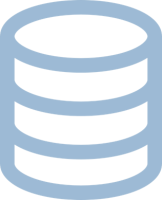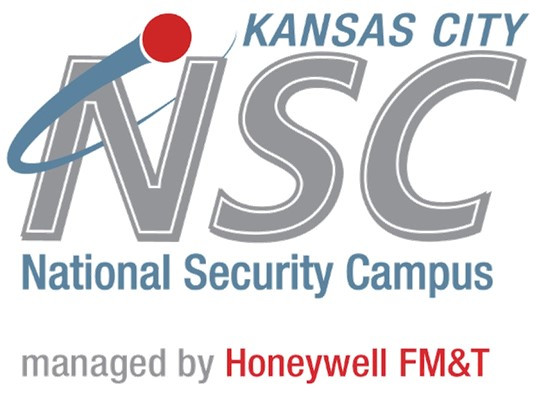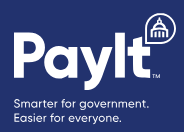AAMOY GUPTA
Seasoned Developer, Data Engineer, and DevOps Practitioner interested in solving complex engineering problems.
Ten years of industry experience. Current in govtech, fintech, and legacy systems, modernization. Well-versed in more. Lifelong learner.
Technical Skills

Software ARCHITECTURE & Development
Languages:
> Core: Java (including variants like Clojure, Groovy), Python, JavaScript (Node.js, React), Shell scripting
> Additional: C/C++, SQL, Perl, Ruby, Scala, Rust, COBOL, NATURAL
Frameworks & Libraries:
> Web & Application Development: Spring Boot, Dropwizard
Design Patterns & Architectures:
> Microservices, State-machines/Business Process Management

DATA ENGINEERING & DESIGN
Database & Data Management:
> Databases: Oracle DB2, PostgreSQL, MongoDB, Marklogic, and others
> Data Transformation & ETL: Row/Record-based, Dictionary-based, Schema-based, Inferred, Fuzzy Transformation, Sensor Fusion
Frameworks & Libraries:
> Data Processing & Machine Learning: Apache Data Processing Stack (Cloudera/HDP: NiFi, Kafka, Zookeeper, Hadoop, Hive, Spark, Camel, etc.), Mulesoft, TensorFlow, PyTorch
Design Patterns & Architectures:
> Flow-based, Sensor Fusion, IoT/Broadcast, Parallelization, Work-Queuing, Big Data, AI

PLATFORM ENGINEERING
> Infrastructure as Code: Ansible, Terraform, Pulumi, Spacelift, Packer, CloudInit
> CI/CD & Source Control: ArgoCD, Jenkins, Artifactory, GitHub Actions, Git, Maven, Gradle
> Cloud Platforms: AWS (including GovCloud), RedHat OpenShift, Google Cloud, Linode
> Observability: PagerDuty, Prometheus, Syslogs, Datadog, CloudWatch, Logz.io, Nagios
Work Experience

2024 - Present
Senior data engineer
Details to be published in short order.

2019 - 2024
Software Developer and Individual Contributor
Played a key role in PayIt’s burgeoning role as a major gov tech/fintech powerhouse as it transitioned from a startup to a “scaleup”.
Property Tax Team
> Developed a genericized property tax microservice using JAVA and Dropwizard, replacing bespoke implementations.
> Deployment of this service significantly reduced the time needed to onboard new property tax clients (PayIt’s largest source of ARR) allowing Sales to sign a larger number of clients year on year. The result was a significant increase in ARR and profitability of the company.
Workflow Team
> Contributed subject matter expertise and played a significant role in the design of PayIt's initial IVR offering based on Twilio, which integrated with our platform. This collaborative effort, first implemented for St. Louis Utilities, generated $200k in ARR in its first year, showcasing the team's ability to deliver impactful solutions and adapt to shifting responsibilities amidst organizational changes.
> Helped create internal tooling using Clojure and flow-based design to help our Client Relations teams create interactions for our conversational UI, replacing an intensive manual process, and creating the capability to demo to clients. This further reduced the lead time to onboard new clients, with the result being an increase in ARR and company profitability.
Platform Data Team
> Amidst a backdrop of frequent reorgs and evolving leadership priorities, played a pivotal role in architecting and implementing a significantly enhanced flat file ingestion system. This initiative dramatically improved data processing speed, cleanliness, and stakeholder satisfaction. Despite limited recognition from upper management, this project notably reduced ingestion-related incidents and maintenance demands, freeing up resources for strategic capital projects and solidifying client trust—an achievement reflective of our team's dedication to technical excellence and client service in challenging circumstances.
> Proposed an enhanced form of ingestion that would rely on industry-standard tooling for data validation and transformation replacing homegrown solutions, the result being greater reliability. I introduced the philosophy of “leveraging common components to develop bespoke implementations” to provide a balance of flexibility and speed through the proper use and support of ETL tools use as Apache NIFI and representations of data using Avro schema repositories and caching. Implementation of this proposal would build further upon the lessons learned in the previous ingestion upgrade and deliver a scalable, yet flexible integration platform solving one of PayIt’s most complex integration engineering challenges.
As An Individual Contributor
> Contributed to efforts to enhance remittance reporting and disbursement as a part of a data warehouse overhaul.
> Implemented and orchestrated a major migration from a legacy NIFI environment to a new clustered setup despite several setbacks. Refactored NIFI Flows to be more performant, and integrated both new and legacy instances with logging, monitoring, and alerting platforms for increased observability. As a result, NIFI infrastructure was transformed from an incorrectly and underutilized platform to one utilized following industry standard patterns, and with greater integration with the rest of the PayIt ecosystem. The result was a greater appreciation for the capabilities of the platform, increased user literacy, and reduced costs and incidents surrounding dealing with legacy editions of the platform.
> Contributed significantly to efforts to stabilize legacy Mulesoft clusters. Refactored and migrated Mulesoft applications to new EKS-borne clusters resulting in simplified management and increased performance. Improved quality of life issues including logging and observability to increase the integration and interoperability between the Mulesoft Anypoint Platform and the remainder of the PayIt ecosystem. The result was a pattern for the migration, upgradation, and enhancement of legacy Mulesoft applications.

2020 - 2021
SYSTEM ARCHITECT [Side project]
As a System Architect at Lyxia, I was tasked with engineering a novel data-driven heuristic system aimed at managing algal ponds and optimizing yields from those ponds.
> Developed a robust data ingestion and processing pipeline complemented by a management web app (using Springboot). The system persisted incoming data from sensors and manually took measurements in a NoSQL database, supplanting the previously used Excel-based system. The heuristic algorithm within the system harnessed this data to provide a current and near-future prediction of pond growth. It was able to display these findings in an easy-to-traverse management system capable of displaying graphs, configuring algorithmic weights, and recording when manual actions took place. The system also included integrations with an authentication service, a user role/privilege system, and an operations log to be able to model the process of pond management itself. The system was productionized and resulted in markedly improved algal harvests. This system was patented/copywritten in China (China Copyright Protection Center) by Lyxia Corporation (Registration Number 2022SR0572806).
> Developed an integration with a warehouse management system to track supplies which would play a role in future automation developments. The in-house solution has been deemed more cost-effective when compared to vendor-provided solutions, due to the unnecessary complexity of vendor tools for our use case, and lack of tangible, usable results. As a result, there is still a preference for my bespoke solution over a one-size-fits-all solution among Lyxia’s plant operators.

2016 - 2019
SENIOR SOFTWARE ENGINEER
As a software engineer, contributed to the effort to modernize legacy railroading systems such that they can be utilized effectively by the next generation of railroaders.
Crew Planning Team
> Developed heuristics to optimize the placement of crews on train pools as part of the Crew Planning and Tickering applications (using Spring boot and Angular frameworks). Used statistical analysis and machine learning on the metadata of previous pool completions to enhance the decision-making process.
> Transitioned core crew planning utilities from physical mainframes to IBM Bluemix and RedHat OpenShift, which provided greater scalability and enhanced analytics, all while greatly reducing railway operating expenditure.
Time Off Application Team
> Developed a Time Off JAVA microservice application using Spring Boot and configurable JBPM /Drools to encode union agreements and business rules concerning time off for railroad employees. The use of a business process management system allowed for greater configurability of business rules, which do not need to be hardcoded within the mainframe. Furthermore, the rules can be displayed graphically, or at least in JAVA (as opposed to COBOL/NATURAL) which is more accessible to 21st century railroad management and union leaders increasing transparency and trust between both parties.
On my Initiative
> Developed a pilot Alexa application (Voice User Interface) that would respond to verbal commands and alert railroaders regarding their next assignment. This system won an internal innovation award and accolades within BNSF following an internal demo of the technology.
> Designed, implemented, and deployed a backend “comparator” microservice which validated the results of modern processes against the ground truth in the legacy mainframe. The microservice was built in Spring boot, and used JBDI and GSON for object comparison. This tool was used extensively for testing and validation, and was crucial in demonstrating the validity of the modernized solution to leadership beyond engineering.

2014 - 2016
CEO / PRINCIPAL
Raised capital to create ARAI (Advanced Robotics and Artificial Intelligence) with the aim of creating a platform incorporating an innovative approach to artificial intelligence. Our platform blended aspects of robotics, data/sensor fusion, machine learning, context-gleaning mechanisms, combined with expert systems for high level decision making and process management.
> Orchestrated the development of a conversational user interface-actuated software stack merging technologies like finite state machines, expert system, IoT, and machine learning. Specifically leveraged existing powerful tools such as ROS (Robotics Operating System), OpenCV, and NLTK (Natural Language Tool Kit). The resulting platform could be leveraged for a bounty of use cases ranging from telepresence robotics to smart infrastructure.
> Secured a seed funding stage of $1M to fund initial development, which propelled ARAI’s valuation to a peak of $30M. This was underscored by demonstrations and pilot programs in diverse sectors such as education and industrial automation.
> Steered the company through technological, market, and internal challenges, gaining invaluable insights and experience into product development, go to market strategy, the challenge of communicating the value of an innovative product, and the nuances of driving innovation in a high-stakes, and at times, cutthroat, environment. Though this venture did not culminate as anticipated, it functioned as a crucible for personal growth, served to hone and temper my technical acumen, and provide crucial insights into the nature of business strategy and adaptability.
Other Skills and Contributions
OPEN SOURCE:
LEADERSHIP:
SPOKEN LANGUAGES:
HONORS AND AWARDS:
REFERENCES: